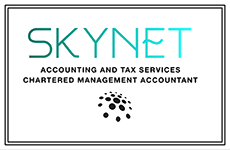Further rates for 2021/22 confirmed
In addition to confirming the basic rate band and personal allowance for 2021/22, the Treasury has also confirmed the cash equivalents for certain vehicle-related benefits in kind to help employers prepare. What do you need to know?

Uncertainty
By this point in the year, the tax and NI rates, bands and thresholds are usually well-established. However, the delayed Budget has meant that the position for 2021/22 is unclear despite the new tax year being only a few weeks away. There have been some confirmations though if you know where to look. The latest relate to company cars and vans.
Cars. The taxable amount where an employee is provided with a company car depends on a “relevant percentage” (based on its emissions) multiplied by the list price. However, where the employer pays for any private fuel the taxable amount is the relevant percentage multiplied by a fixed figure, and for 2021/22 this has now been confirmed as £24,600 (an increase from £24,500).
Vans. The taxable amount for a company van does not depend on emissions. A benefit only arises where the van is used for private journeys. This is then a fixed amount, which for 2021/22 has been confirmed as £3,500 (up slightly from £3,490). Where fuel is provided for private journeys, the fixed taxable amount is increasing to £669 (from £666).
Related Topics
-
Simpler Recycling rules take effect
New rules on how workplaces must sort their waste and recycling have taken effect from 31 March. What are the key changes to be aware of?
-
New CGT reporting tool
Self-assessment returns aren’t set up for the change in capital gains tax (CGT) rates on the government filing system and will require a manual adjustment for 2024/25 to ensure the correct amount is paid. Why is there a problem and can a new online tool help?
-
MONTHLY FOCUS: THE ENTERPRISE INVESTMENT SCHEME QUALIFYING CONDITIONS
The enterprise investment scheme (EIS) is a generous collection of tax reliefs aimed at encouraging private investment into relatively young companies. In this Focus, we look at the qualifying conditions relating to the investor and the issuing company that must be met in order for a claim for relief to succeed.





 This website uses both its own and third-party cookies to analyze our services and navigation on our website in order to improve its contents (analytical purposes: measure visits and sources of web traffic). The legal basis is the consent of the user, except in the case of basic cookies, which are essential to navigate this website.
This website uses both its own and third-party cookies to analyze our services and navigation on our website in order to improve its contents (analytical purposes: measure visits and sources of web traffic). The legal basis is the consent of the user, except in the case of basic cookies, which are essential to navigate this website.